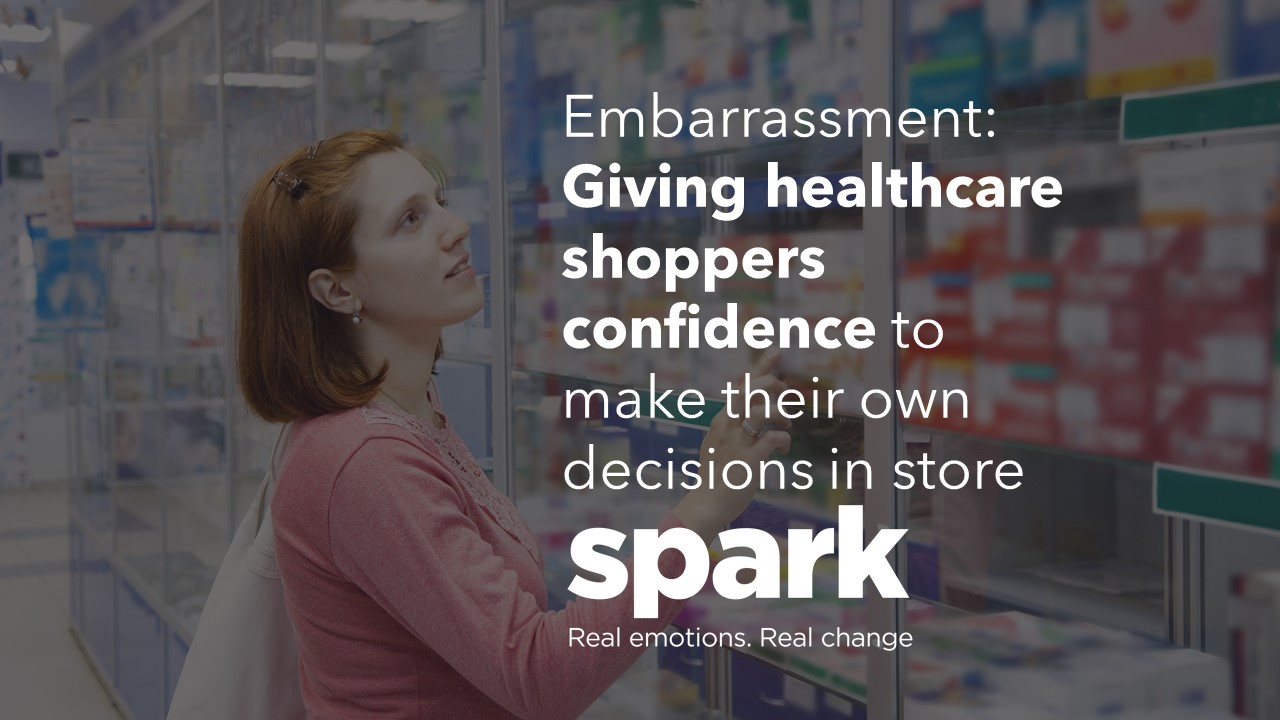We’ve all been there. Trying to shop when we’re feeling ill. Making that desperate attempt to find something so we can just crawl back into bed, or be able to get on with our day. As we saw in a previous article, a significant proportion of shoppers are experiencing symptoms whilst in-store when shopping for healthcare products, so you’re definitely not the only one.
It’s well documented that shoppers often want to be seen buying things (known as conspicuous consumption) to help signal who we are as people. But actively avoiding or hiding purchasing certain products is far less researched. The term for the behaviour is ‘masking’, which is our coping strategy for hiding that signalling.
One study (Nichols, Bridget & Raska, David & Flint, Daniel. (2014)) found the most common ‘masking’ categories were: Sexual Health, Feminine care, Digestive Health, Footcare, and Weight Loss. Surprisingly, as many as 88% of participants also reported purchasing an additional item to mask their embarrassing item including: groceries, magazines, clothing, or just using a self checkout.

Communication at shelf is crucial
What retailers and brands forget is that it can be embarrassing to ask for help when you’re looking or feeling at your worst, even if it can often be the best route to finding the right product for you. But even so, we’re more likely to go to the shelf to find what we need. This means that being able to empower your shoppers to make the right decision on their own can be the best route to getting them to trial your brand.
Shoppers experiencing symptoms are likely to be wanting to use the product immediately, so they need to know and trust that it will work. They’re looking for the same cues the pharmacist would otherwise give to them if they weren’t so embarrassed to ask for help.
Surprisingly enough that also makes these shoppers less price-sensitive, they just want the product that’s going to physically cure or relieve them as soon as possible. But embarrassment is a powerful force, and somewhat irrationally, this can even lead to shoppers walking away empty-handed, and delaying treating their symptoms if they feel too embarrassed to find what they need.
Shoppers are looking for privacy
For more sensitive categories like digestive health, privacy can be a big factor in how shoppers find the product they need. They want to get in and out as quickly as possible to treat their symptoms, often without being seen or recognised. This means the more private the experience of the shelf can be, the more likely they will be to find what they need.
Even the nature of the conversation with the pharmacist can be quite public, so any steps the pharmacy or store can take to give shoppers privacy the more likely they are to feel relaxed enough to purchase.

Pack design and language can help build trust
In more developed markets like the UK or US, the shelves can give shoppers a lot of information to help them make decisions, but in less developed markets often shoppers are pointed in the right direction, but the rest is on them to find the right choice.
In order to build that trust, the information needs to be clear and concise, and from a source that shoppers trust. Using cues and language that connect to HCP’s (health care professionals) is a great way of building that trust and giving shoppers the confidence they need.
Understanding human traits is crucial
As always, often the best insight in shopper research is remembering that we’re human. We’re flawed, biased, irrational, and emotional, and all of that means our behaviour needs to be guided at every step of the way to help shoppers make the right decision for themselves. This is no more important than in a category like healthcare, where the quality of life can be so determined by the decisions we make in-store.
How can we help
At Spark Emotions, we are experts in understanding consumer healthcare shoppers, we have spoken to more than 10,000 healthcare shoppers in-store about their decisions and analysed the behaviour of over 5,000 people at shelf. Our proven methodologies help us get to the real emotions of shoppers and our team of industry experts are able to translate these insights into actions, giving our clients the ability to make changes that will drive growth.
Sources
Nichols, Bridget & Raska, David & Flint, Daniel. (2014). Effects of consumer embarrassment on shopping basket size and value: A study of the millennial consumer. Journal of Consumer Behaviour. 14. 10.1002/cb.1500.
Get in touch to find out how we can help you

Written by Will Morgan, Associate Director at Spark Emotions
If you have any questions, feel free to reach out to Will via email will.morgan@sparkemotions.com or connect on LinkedIn






